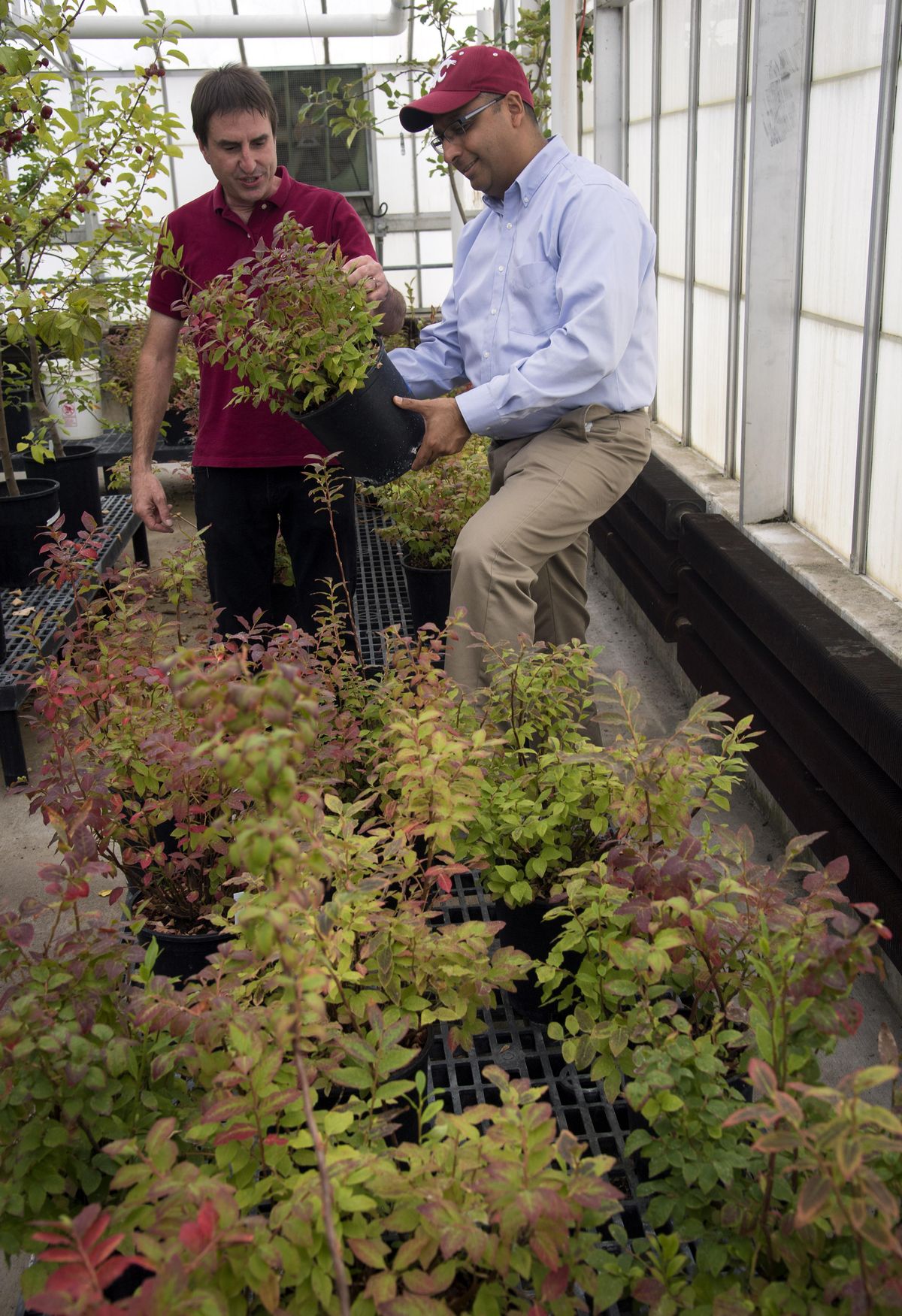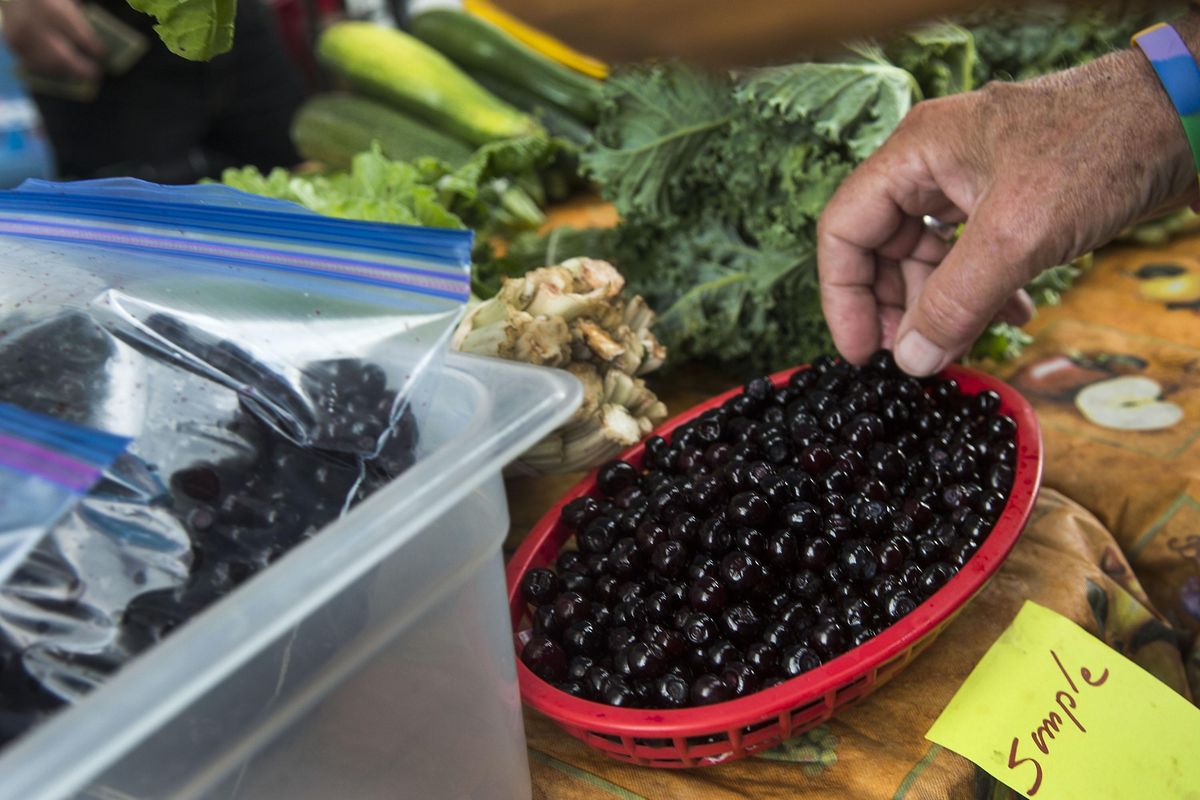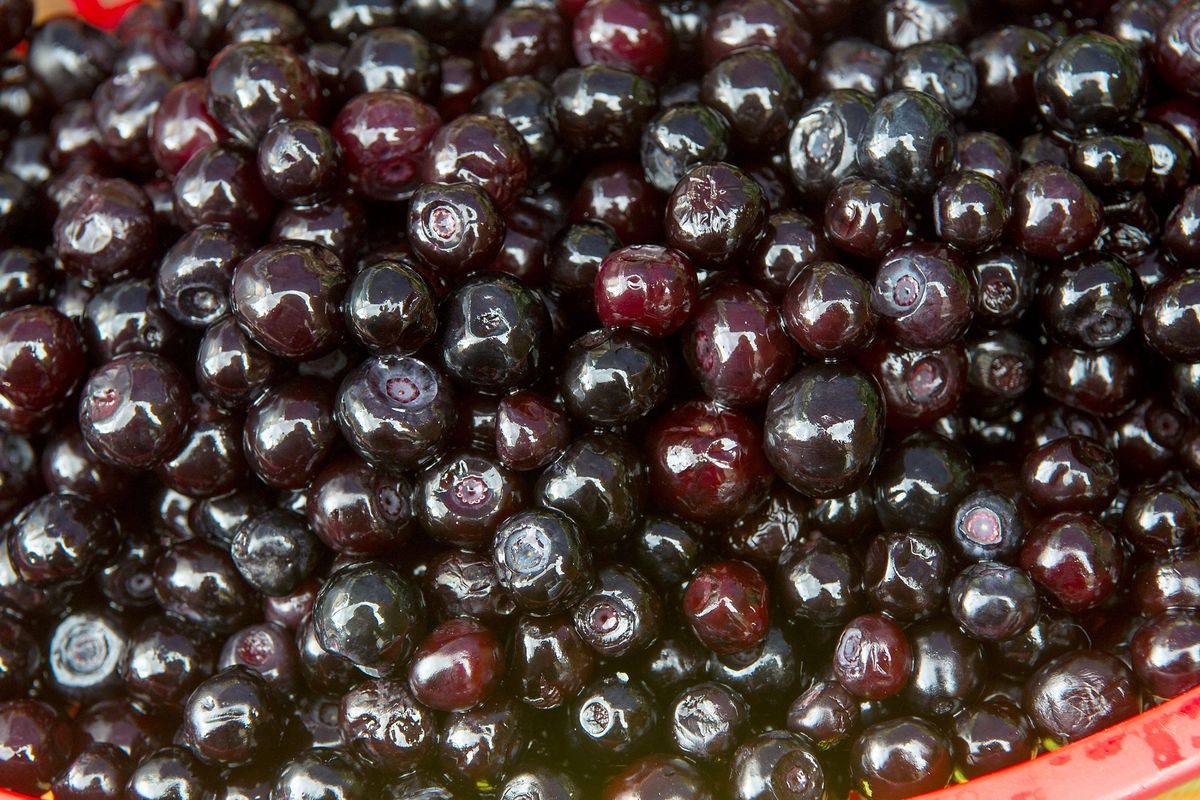WSU researchers taming the wild huckleberry
Huckleberries for sale on Wednesday, Sept. 7, 2016 at the Downtown Farmers Market in Coeur d'Alene. (Kathy Plonka / The Spokesman-Review)Buy a print of this photo
Washington State University researchers are setting their sights on domesticating the wild huckleberry, a goal that has eluded plant scientists for decades.
Huckleberries are notoriously fickle plants. The mountain shrubs don’t transplant well and even huckleberry bushes grown from seeds seldom produce fruit.
But in a WSU greenhouse, cloned shrubs are producing berries. Scientists say their ultimate goal is a sturdy plant with high yields of the tangy-tart berries.
“The flavor profile of a huckleberry is legendary,” said Amit Dhingra, an associate professor in WSU’s College of Agriculture. “We want a huckleberry plant that produces like a blueberry without sacrificing the flavor.”
At the Pullman campus, rows of potted huckleberries are starting to display red fall leaves. They’re the cloned descendents of two huckleberry plants that Biotechnology Manager Nathan Tarlyn purchased at a commercial nursery several years ago.
Huckleberries growing in the mountains don’t produce until they’re about 5 to 7 years old. But in the greenhouse’s controlled climate, the 18-month-old plants flowered this spring. Tarlyn brought in bumblebees to cross pollinate the huckleberries with blueberries.
Now, he has 2,000 tiny seedlings from this year’s berry crop, which will be studied for desirable traits.
Can the bushes produce clusters of berries, instead of the single berries found on wild huckleberries? Are the plants strong enough to handle mechanical harvesting? And most importantly, can they produce fruit that rivals the taste of wild huckleberries?
Time will tell.
For Tarlyn, who buys the huckleberries he sprinkles on his oatmeal at farmer’s markets, the berries “taste like summer in the woods.”
But the millions of gallons of huckleberries sold each year in the Northwest represent hours of laborious picking in scattered patches. Commercial demand outstrips supply. Huckleberry shakes, ice cream and pies are staples of regional cuisine. Huckleberry candies, jams and syrups are high-demand gifts. And the health market is still largely untapped.
Huckleberries have even more of the purple pigment associated with antioxidants than blueberries, which puts them on the list of high-nutrition “super foods.”
Huckleberries’ popularity often leads to conflicts in the woods, said Shoshana Cooper, a spokeswoman for the Idaho Panhandle National Forests. Commercial picking isn’t allowed on either the Idaho Panhandle or Colville national forests, but that doesn’t stop people from selling the berries gathered there, she said.
A large group of commercial pickers can strip an area clean, damaging the bushes with rakes and taking berries away from recreational pickers and wildlife that depend on them for food, Cooper said.
“It would be great if huckleberries could become a domesticated product,” she said.
Commercial production would relieve some of the foraging pressures on public lands, without diminishing wild huckleberries’ mystique or detracting from family traditions of gathering berries at favorite spots, Tarlyn and Dhingra said. There will always be a niche for wild berries, similar to the market for wild blueberries, they said.
The work at WSU is taking a different approach to domesticating huckleberries than previous efforts at the University of Idaho’s Sandpoint research and extension office.
UI horticulture professor Dan Barney’s research focused on developing a pure strain of domestic huckleberries, without a blueberry influence. In a 2005 interview, Barney said he didn’t want to sacrifice flavor for abundance. Budget cuts ended the research, and Barney has since retired.
But higher yields are important for making huckleberries viable for commercial growers, Dhingra said. He hopes to release a domestic huckleberry within a few years that can be licensed. It would be sold with a proprietary high-acid soil mix and fertilizer.
Gardeners and hobby farmers are another potential market for domesticated huckleberries.
Plants of the Wild, in Tekoa, Washington, sells huckleberry bushes to eager buyers with the warning that they’re difficult to cultivate.
“People plant them in their backyards. It’s hard to get them to grow, but everyone wants to try,” said Kathy Hutton, Plants of the Wild manager. “There’s something that makes them not adaptable to other sites. … We don’t know whether it’s elevation, or soil acidity or something else.”
Joe Culbreth has 1,200 huckleberry bushes on his 15-acre fruit and nut farm in Rathdrum. Six years after after the bushes went into the ground, he picked his first berries this summer.
“It was super exciting,” Culbreth said. “I would say we had enough for a small pie. … Next year, I’m expecting many pies.”
But why the bushes produced this year remains a mystery to Culbreth, who wondered if the plants’ age or weather-related conditions triggered the fruit.
Culbreth wants to get soil from a wild huckleberry patch analyzed to determine if there’s a combination of nutrients or fungi that helps wild plants thrive. Some friends have even told him to sprinkle bear poop on his bushes.
At WSU, researchers also hope to unlock some of the mysteries surrounding wild huckleberry production.
The bushes spread by rhizomes, which means an entire patch might be one or two plants. That’s why the shrubs don’t transplant well. Even starting a huckleberry bush from a transplanted rhizome is tricky. The plants seem to lack something from their original environment that they need to flourish.
But the cloned huckleberries in the WSU lab appear to be thriving in the potting soil mix. “We’re giving it a new environment,” Dhingra said.
This fall, the researchers will start meeting with interested farmers to discuss trials for huckleberry cultivation.
Hutton, the Plants of the Wild manager, won’t be surprised when a domestic huckleberry hits the market.
“Somebody will figure it out,” she said, “and it will be extremely popular.”








